Olympiad Test : Pictorial Representation Of Data - Class 5 MCQ
20 Questions MCQ Test - Olympiad Test : Pictorial Representation Of Data
The bar graph shows the results when a die was thrown a number of times.

Q. How many sixes were thrown?

Q. How many sixes were thrown?
The bar graph shows the favorite colors of 20 students in a class.

Q. How many more of them favored orange than those who favored green?

Q. How many more of them favored orange than those who favored green?
The bar graph shows the scores obtained by Shraddha in her end of year exams.

Q. How many more did Shraddha score in her best subject than in her worst subject?

Q. How many more did Shraddha score in her best subject than in her worst subject?
The bar graph shows the scores obtained by Shraddha in her end of year exams.

Q. Shubhra’s score in English was 15% higher than Shraddha’s score in English. What was Shubhra’s score in English?
The pie chart shows the amount of time each day that Shraddha spends on various activities.
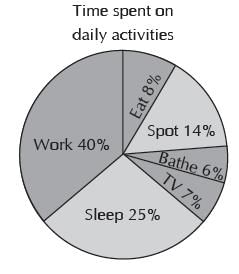
Q. If this information were displayed using a bar graph with hours on the vertical axis, what would be the height of the bar for sleep?
Shraddha recorded the amount of time she spent on six activities over a twenty four hour period and drew a bar graph, as follows:

Q. Approximately how many more hours did she spend sleeping than watching TV?
Shraddha recorded the temperature in her room (in Degrees Fahrenheit) every two hours over a 12 hour period from noon to midnight. The results are shown in the line graph.
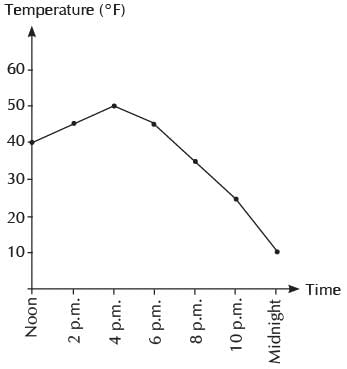
Q. What was the approximate temperature in her room at 9 p.m.?
The line graph shows how the record time for the 100 m sprint changed from 1964 when Bob Hayes of the US held the record to 2012 when Usain Bolt of Jamaica held the record.

Q. From the graph, what was the maximum length of time for which the record remained unchanged?
The histogram shows the heights of 21 students in a class, grouped into 5-inch groups.
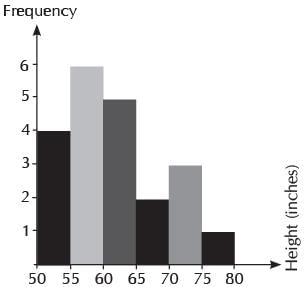
Q. How many students were greater than or equal to 60 inches tall?
The histogram shows the heights of 21 students in a class, grouped into 5 inches groups.

Q. How many students were greater than or equal to 55 inches tall but less than 70 inches tall?
A class carried out an experiment to measure the lengths of cuckoo eggs. The length of each egg was measured to the nearest mm. The results are shown in th95e5 2f0ollowing histogram:

Q. How many eggs were measured altogether in the experiment?
The histogram shows the birth weights of 100 new born babies. Babies who weigh less than 5 lb are considered to have a low birth weight. Babies who weigh 10 lb or more are considered to have a high birth weight.
![[image]](https://cn.edurev.in/ApplicationImages/Temp/231285ab-31e6-4ba4-8072-a28dfc65784e_lg.gif)
Q. What percent of the babies had neither a low nor a high birth weight?
Which letter occurs the most frequently in the following sentence?
THE SUN ALWAYS SETS IN THE WEST.
A fair die was thrown 100 times. The frequency distribution is shown in the following table:

Q. How many throws scored less than 3?
60 students sat a test. The frequency distribution is shown in the following table:

Q. How many students scored 5 or more?
60 students sat a test. The frequency distribution is shown in the following table:

Q. How many students scored greater than or equal to 4, but less than or equal to 7?
Shraddha did a survey of the number of pets owned by her classmates, with the following results:
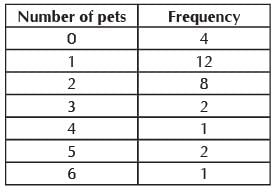
Q. How many of her classmates had less than 3 pets?
The children in a class did a survey of the number of siblings (brothers and sisters) each of them had. The results are recorded in the following table:

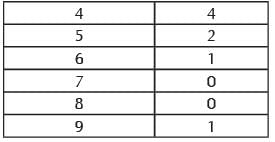
Q. How many families had more than 4 children?
Which one of the following is discrete data?
Lisa conducted a survey of the cars passing her house. How many cars passed in total?

















